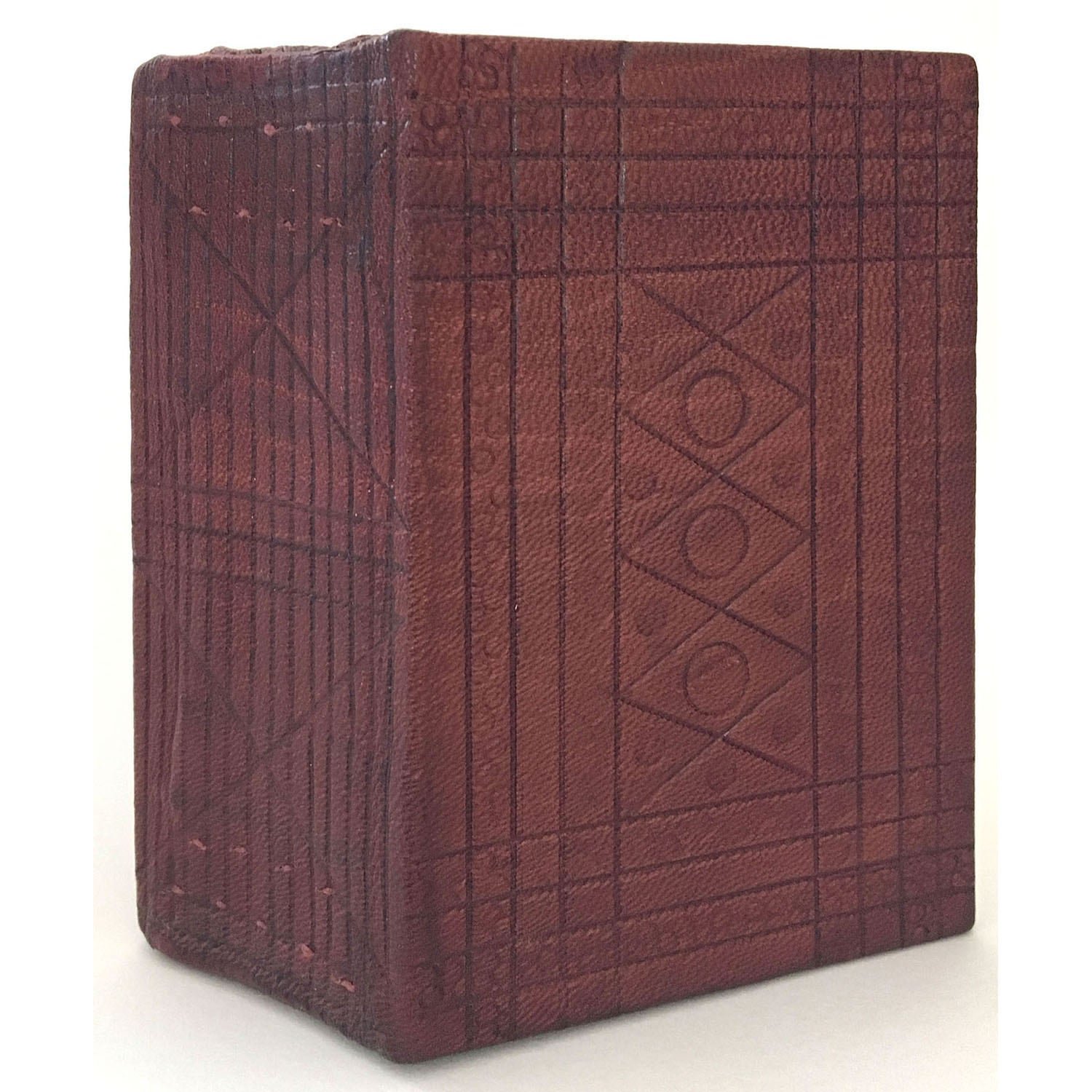 Image 1 of 5
Image 1 of 5

 Image 2 of 5
Image 2 of 5

 Image 3 of 5
Image 3 of 5

 Image 4 of 5
Image 4 of 5

 Image 5 of 5
Image 5 of 5






Ethiopian Binding: models
The Ethiopian binding structure may have emerged as early as the fourth century and has been in use unchanged for centuries. This humble, elegant binding opens flat and is the inspiration for many contemporary “Coptic” book arts structures. Characteristics include wood boards trimmed flush with the text block, paired sewing stations, and chain stitch-sewing that enters the board edge to incorporate board attachment. Historically the text blocks were made of parchment. Any covering would be done with goatskin. If the boards were to be left uncovered, no endband was added. If the boards were partially or fully covered in leather, braided leather endbands were sewn on after covering.
These models were made as demos while teaching a bookbinding workshop. They may include marks or notes made to aid students. Colors and patterns will vary. Cutaway bindings revealing structural features are sometimes available.
Workshop handout not included with model but available separately here: Fifteen-page detailed, illustrated workshop handout with bibliography plus tool and supply list. Directions for the endbands are not included. They are found in Endbands from East to West by Jane Greenfield and Jenny Hille. Please note this handout was written not to replace but to supplement an in-person workshop demo.
The Ethiopian binding structure may have emerged as early as the fourth century and has been in use unchanged for centuries. This humble, elegant binding opens flat and is the inspiration for many contemporary “Coptic” book arts structures. Characteristics include wood boards trimmed flush with the text block, paired sewing stations, and chain stitch-sewing that enters the board edge to incorporate board attachment. Historically the text blocks were made of parchment. Any covering would be done with goatskin. If the boards were to be left uncovered, no endband was added. If the boards were partially or fully covered in leather, braided leather endbands were sewn on after covering.
These models were made as demos while teaching a bookbinding workshop. They may include marks or notes made to aid students. Colors and patterns will vary. Cutaway bindings revealing structural features are sometimes available.
Workshop handout not included with model but available separately here: Fifteen-page detailed, illustrated workshop handout with bibliography plus tool and supply list. Directions for the endbands are not included. They are found in Endbands from East to West by Jane Greenfield and Jenny Hille. Please note this handout was written not to replace but to supplement an in-person workshop demo.
The Ethiopian binding structure may have emerged as early as the fourth century and has been in use unchanged for centuries. This humble, elegant binding opens flat and is the inspiration for many contemporary “Coptic” book arts structures. Characteristics include wood boards trimmed flush with the text block, paired sewing stations, and chain stitch-sewing that enters the board edge to incorporate board attachment. Historically the text blocks were made of parchment. Any covering would be done with goatskin. If the boards were to be left uncovered, no endband was added. If the boards were partially or fully covered in leather, braided leather endbands were sewn on after covering.
These models were made as demos while teaching a bookbinding workshop. They may include marks or notes made to aid students. Colors and patterns will vary. Cutaway bindings revealing structural features are sometimes available.
Workshop handout not included with model but available separately here: Fifteen-page detailed, illustrated workshop handout with bibliography plus tool and supply list. Directions for the endbands are not included. They are found in Endbands from East to West by Jane Greenfield and Jenny Hille. Please note this handout was written not to replace but to supplement an in-person workshop demo.
